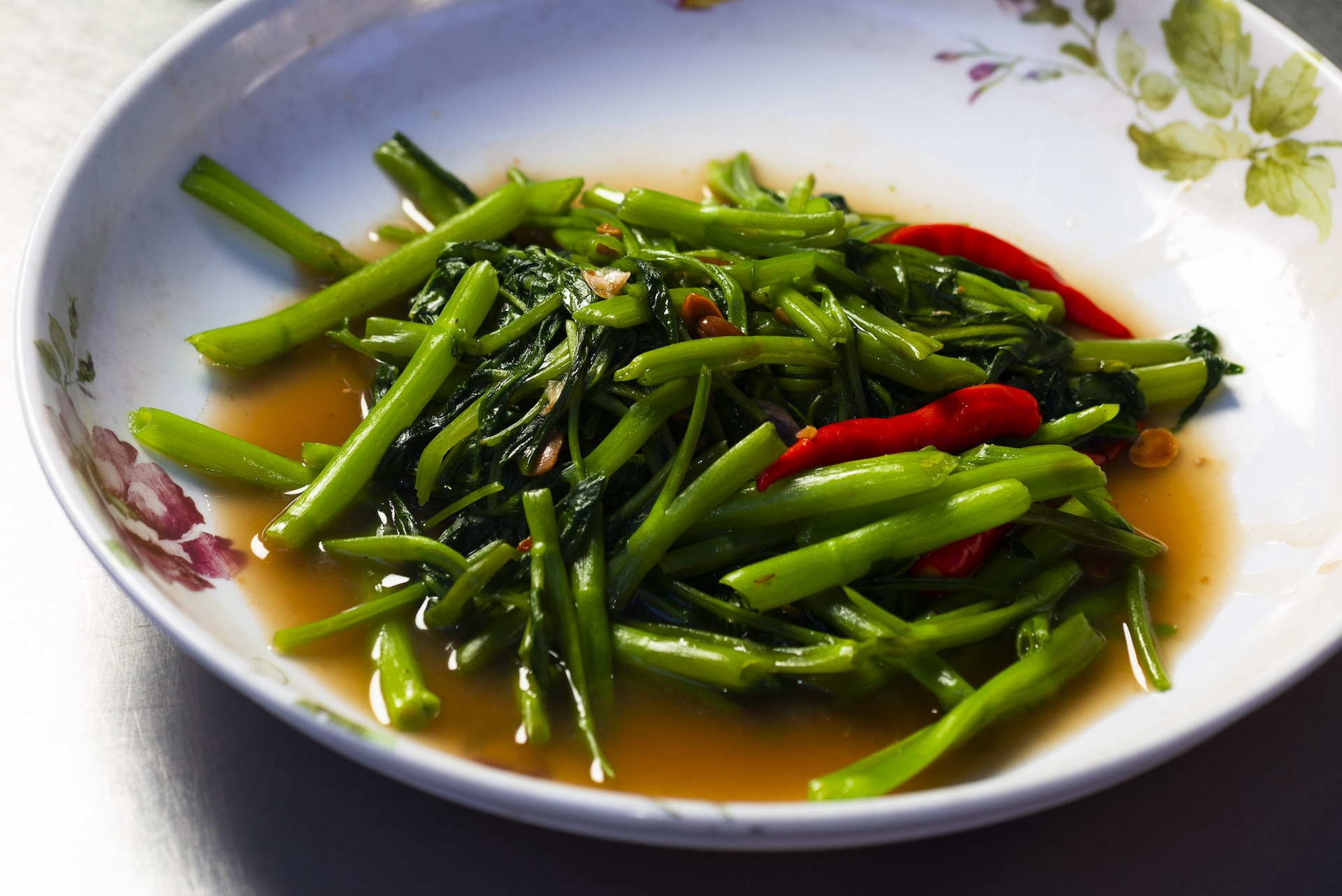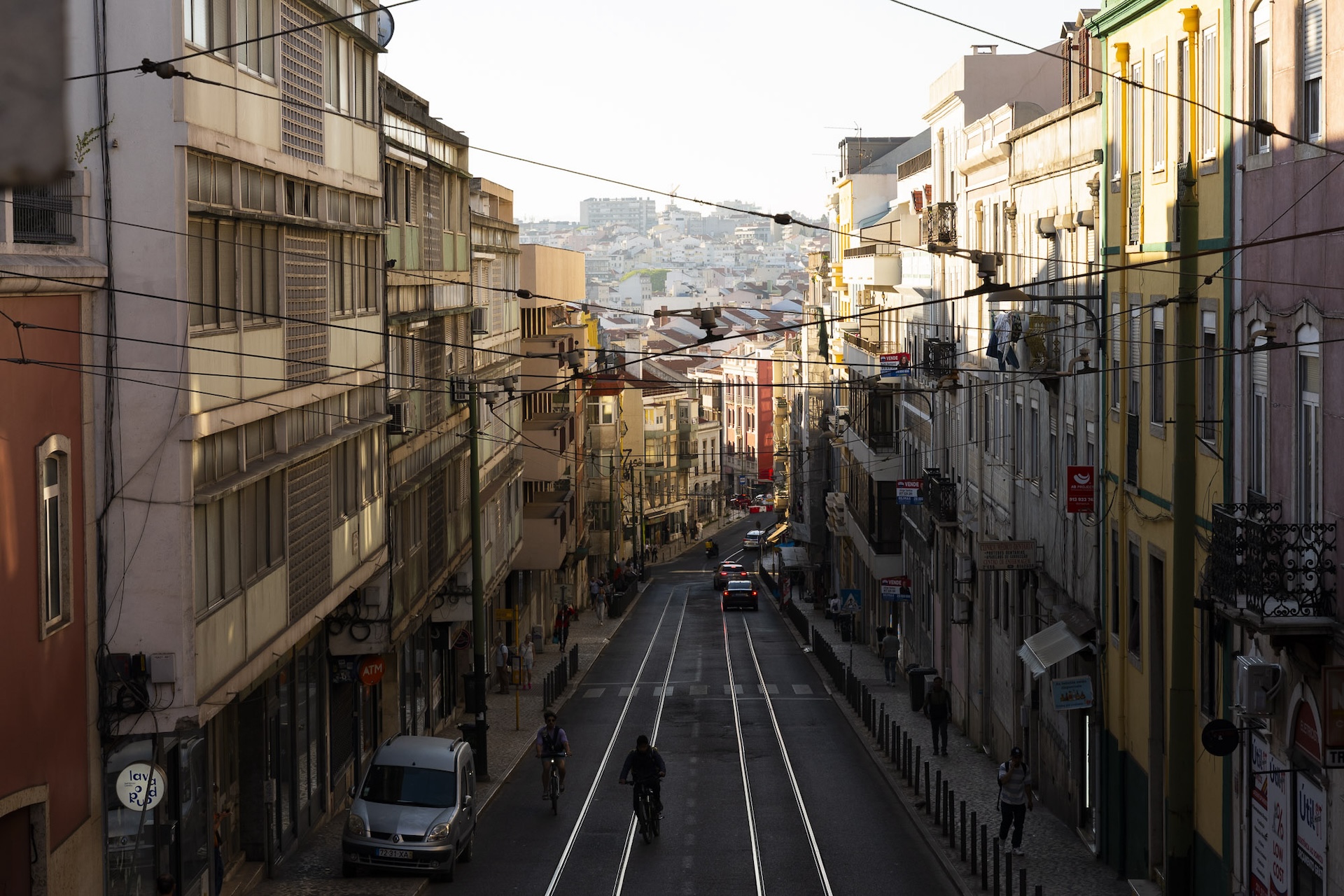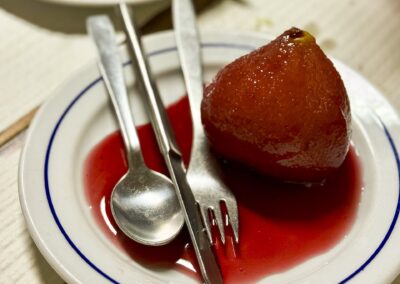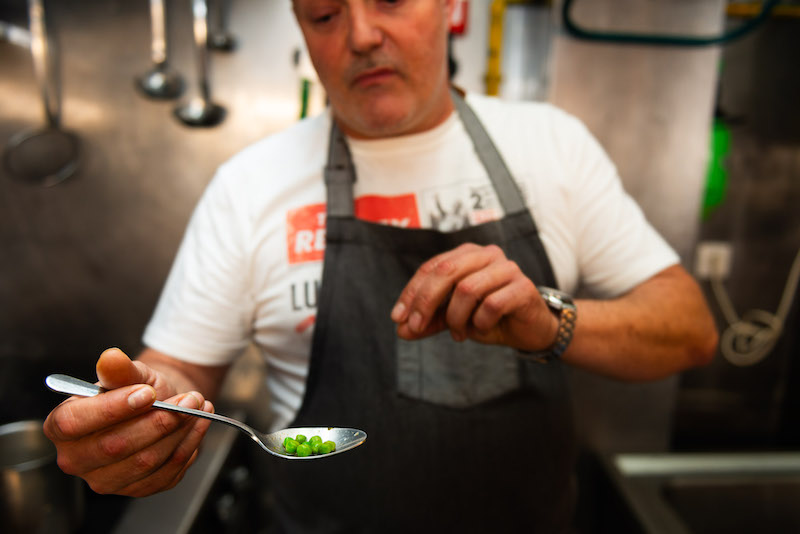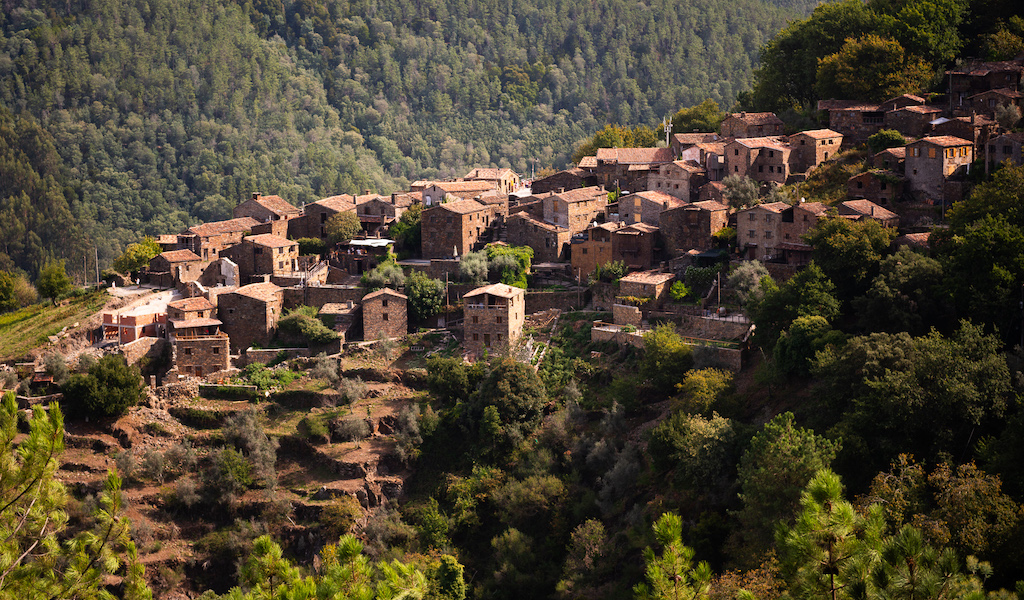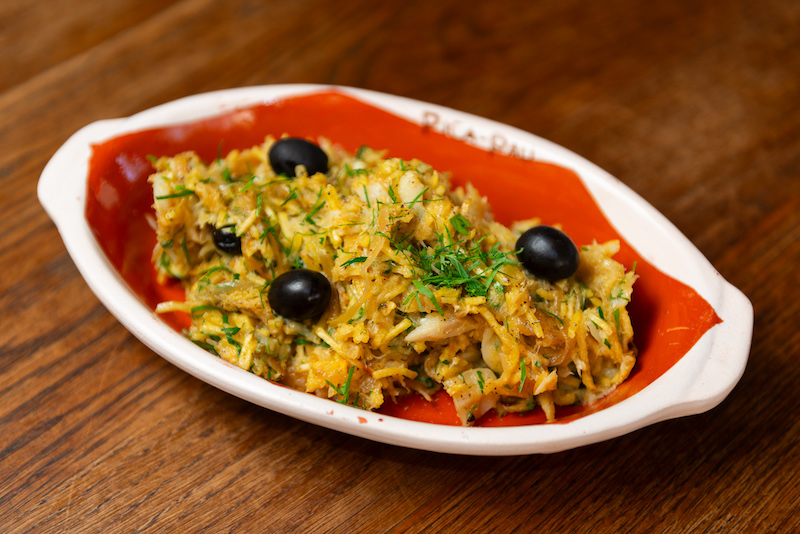We can't find the internet
Attempting to reconnect
Something went wrong!
Hang in there while we get back on track
Search results for "Austin Bush"
Bangkok
Pad Thai and Beyond: Nine of Our Favorite Meals in Bangkok
The vast majority of the food in Bangkok is, without a doubt, Thai. But peek under the hood and you’ll find ingredients, cooking techniques, and dishes that can be traced back to places far beyond Thailand. Influences brought by Chinese immigrants – namely Hokkien, Hakka, and Teochew people – have done the most to shape food in Bangkok. Immigration from the Muslim world has also had a massive impact on the city’s cuisine. And even contact with Europeans has come to shape Thai food. The result of all this is the fascinating, delicious jumble of ingredients, cooking techniques, dishes, and influences that today we recognize as Thai food.
Read moreBangkok
Recipe: Phat Phak Bung Fai Daeng, Thai-Style Flash-Fried Morning Glory
A Bangkok street food staple, phat phak bung fai daeng (flash-fried morning glory) delivers fiery garlic-chili heat in under two minutes. Crisp greens, wok smoke, and a splash of oyster sauce make this simple stir-fry one of Thailand’s most beloved everyday meals.
Read moreLisbon
Lisbon’s Best Wine Bars
The numbers don’t lie: the Portuguese drink the most wine per capita of any nationality. Not surprisingly, you don’t have to look far to find the drink in Lisbon, a city where a glass of wine is sometimes cheaper than a bottle of water. But if you’re looking for a unique wine – perhaps something made by a small producer, a long-lost grape, or a bottle from an obscure region – in a comfortable or perhaps even stylish atmosphere, poured by someone who can tell you a bit about what you’re drinking, things get a little more complicated.
Read morePorto
On the Road: Feasting on Suckling Pig and Sparkling Wine in Bairrada
At first glance, there’s not much to see in Mealhada, a town in Portugal’s central inland Bairrada region about an hour’s drive south of Porto. If there is a main feature here, it’s probably the EN1, the country’s original north-south highway, which slices the town in half, providing a conduit for a seemingly never-ending parade of large, noisy trucks. Yet the town’s roadside signs reveal something else: “Rei dos Leitões,” “Pedro dos Leitões,” “Virgílio dos Leitões,” “Meta dos Leitões,” “Hilário Leitão.” Mealhada is ground zero in Portugal for leitão, roast suckling pig.
Read moreLisbon
Belmiro: Game Time
“This restaurant is different,” says Belmiro de Jesus. He’s describing his own establishment, Belmiro, which he opened in 2020. And, we have to admit, it’s true. From the menu, with its emphasis on game dishes, to the unique wines – quirky labels that won’t break the bank – the chef has created a restaurant that stands out. If there’s anything we’d add to his descriptor, it would be that Belmiro is also very delicious and very Portuguese.
Read moreLisbon
Recipe: Açorda de Gambas, Portuguese Bread Porridge with Prawns
Start with stale, leftover bread. Add to this some of Portugal’s most decadent, richest ingredients, and you have açorda de gambas, a dish that manages to bridge the gap between poverty and indulgence. The Portuguese are masters at transforming leftover or stale bread into new dishes. In the north, leftover slices of bread are dipped in eggs, fried in oil and sprinkled with sugar in the dessert known as rabanadas. In the south, açorda is a soup made from slices of day-old bread topped with hot water, garlic, herbs, and a poached egg. The south is also home to migas, bits of stale bread and fat that are cooked into an almost omelet-like form.
Read moreBangkok
Neighborhoods to Visit: Thonburi, Bangkok’s Little Brother
Mention Thonburi to Bangkok people, and they’re likely to picture a distant, suburban – perhaps even rural – enclave. But the neighborhood is located just across the Chao Phraya River from Bangkok, imminently accessible via river-crossing ferries, bridges, and the Skytrain, and is home to a less-publicized yet visit-worthy, vibrant food scene. In particular, one Thonburi street, Thanon Tha Din Daeng, in the Khlong San area, is home to a huge variety of excellent legacy restaurants and stalls, not to mention a decent market, all of which can be visited on foot – a rarity in Bangkok.
Read moreLisbon
Recipe: Sapateira Recheada, Portuguese Stuffed Crab
We are in Lota da Esquina, in Cascais, staring down a small bowl filled to the brim with a mix of crab meat, chopped eggs, mayonnaise and other seasonings. On the surface, it looks like a straightforwardly decadent dish but according to chef/owner Vítor Sobral, it’s actually a way to boost a product that’s not quite at its peak.
Read moreBangkok
Khun-Yah Cuisine: Wat Traimit’s Real Hidden Treasure
It’s said that the massive gold Buddha statue at Bangkok temple Wat Traimit was once hidden away – its value concealed from an approaching army under a thick layer of plaster. It was only when workers were relocating it in the 1950s that the statue fell and the plaster exterior cracked, revealing a core of solid gold. If Wat Traimit has another hidden treasure, we’d argue that it’s Khun-Yah Cuisine. Enter one of Bangkok’s most visited temples and wind through tour buses and rows of tourists, guides, and Buddhist monks to the eastern edge of the compound; keep your eyes peeled, and you’ll see an almost garage-like space and a sign. This is Khun-Yah Cuisine.
Read moreBangkok
Ban Wannakovit: Bangkok’s Culinary Time Capsule
Walk down a narrow, unmarked lane in Ko Ratanakosin, the artificial island that’s the birthplace of Bangkok, and keep your eyes peeled for a wooden, gingerbread-style mansion not far from the Democracy Monument – there is no sign here. If the gate is open, Ban Wannakovit is in operation. Walk past a traditional Thai spirit house to the front porch, which is lined with a few tables, or continue inside the house, where dining tables mingle with family portraits, antique furniture, and other heirlooms. If there’s any homier dining experience in Bangkok, we haven’t found it.
Read moreLisbon
Recipe: Canalha’s Razor Clam Rice with Deep-Fried Hake
“This is the best time for bivalves,” says Portuguese chef João Rodrigues. It’s late February, and we’re speaking in the dining room of Canalha, his award-winning Lisbon restaurant. “Usually you think of bivalves as something you eat in summer, but you shouldn’t. During the months with no letter R, you shouldn't eat them.” We had asked the chef to share a seasonal dish, but since proper spring produce hadn’t yet quite arrived, he suggested razor clam rice served with deep-fried hake – a fish related to cod, although with a more delicate flavor – creating a dish that takes advantage of those plump, non-summer bivalves.
Read moreLisbon
Saving Lisbon’s Classic Steakhouses
The story goes that in the early 19th century, an Italian immigrant, António Marrare, arrived in Lisbon and opened four eateries, essentially introducing the concept of the contemporary restaurant to the city. These venues – all of which bore his name – would have an impact on Lisbon’s culinary scene that exists until today, as would the steak dish he invented, which was also – perhaps unsurprisingly – named after himself. Marrare’s last restaurant closed in 1866, but a century later Lisbon restaurateurs, nostalgic for that era of dining, opened restaurants that paid homage to Marrare. Those that exist today include Snob Bar, opened in 1964, Café de São Bento, in 1982, and Café do Paço, in 2009.
Read moreBangkok
Bangkok State of the Stomach
Look at Bangkok through the lens of Instagram, a travel article, or a listings website, and these days the city’s restaurant scene can appear to be all about Michelin stars. The brand swept into the city in 2017, and in a short time, chefs and diners alike became obsessed with collecting its celestial accolades. At press time, 35 Bangkok restaurants can claim at least one Michelin star – in 2024, one restaurant earned three – and the company continues to have a massive impact on the city’s dining scene. Yet look at Bangkok from ground level, and you’ll see a very different picture. The curry shacks, noodle stalls, legacy restaurants, and street vendors that have shaped the city’s dining scene for decades continue to put out some of the best value, casual, unselfconscious, full-flavored, delicious food on earth, all while blissfully unaware of a French tire manufacturer’s rating system. Michelin may have grabbed peoples’ attention, but this has added to, rather than taken away from, Bangkok’s food scene.
Read moreLisbon
Uaipi: Cassava Café
We’re in a small café in Lisbon’s Madragoa neighborhood, and all of the disparate dishes loading down the table in front of us – small bread-like balls, a dish that resembles a small crepe, granola studded with flakes of grains, a pudding-like dessert – have one ingredient in common: cassava. “Cassava is known as the Queen of Brazil,” says Laila Ferreira Soares. “Everyone eats it, it’s always present.” Laila, a native of Brazil, along with her partner, Gregory Busson, a Frenchman, are the pair behind Uaipi, a new café/market in Lisbon with a focus on this particular ingredient.
Read moreLisbon
Best Bites 2024: Lisbon
2024 was, for me, a year of travel, with just about as much time spent outside of Lisbon as inside. When I spend a lot of time on the road, I feel even more compelled to cook when I’m at home, so some of my best bites this year were things I prepared myself. But in the course of reporting for Culinary Backstreets and other outlets, I visited Lisbon restaurants both new and familiar, and scanning through an iPhone library of dishes both homemade and cooked by the pros, the following stood out. - Austin Bush
Read moreLisbon
Recipe: Ervilhas Guisadas, Portuguese-style Braised Peas
We’re in Os Papagaios, the restaurant Joaquim Saragga oversees in Lisbon’s Arroios neighborhood, where we’ve asked him to show us how to make one of Lisbon’s more iconic dishes: ervilhas guisadas, peas braised with Portuguese sausages, typically crowned with poached eggs. Come spring, Portugal revels in green-hued produce: fava beans, asparagus, artichoke, spinach and other leaves. Peas feature in this bounty, but the ubiquity of frozen peas means that the dish makes frequent appearances on tasca and restaurant menus during all times of year.
Read morePorto
Casa Louro: Same As It Ever Was
When we arrived, there were one or two customers quietly drinking wine at the bar. Later, a man entered and bought cured ham by the kilo, complaining about how much fat it contained. A food tour stopped by, filling the silence with English-language explanation. A bit later, the mailman stuck his head in; he had no letters to deliver, but it was clear that he was angling for a drink. The clientele that late morning at Casa Louro, a bar and restaurant in Porto, seemed to be a microcosm of the city’s life. Indeed, with hams hanging from the ceiling, soccer paraphernalia on the walls, and crusty old customers, it looks like the quintessential Portuguese bar. And in many ways it is, but Casa Louro is also something of a dying breed.
Read moreLisbon
Vida de Tasca: Keeping it Classic
It’s that quiet time between lunch and dinner, and we’re sitting with chef Leonor Godinho in a tasca, or rustic, casual, Portuguese restaurant. The furniture is sturdy but unremarkable, and walls are mostly bare except for a couple old photos, a child’s drawing and the ubiquitous vitrine, a built-in refrigerator. “I knew about this place because my best friends had just moved their studio to this building,” Leonor tells us of the space, formerly known as Casa do Alberto. “I would come here all the time to eat with them, and they would joke with me, ‘It would be great if this was yours!’”
Read morePorto
Conservas Pinhais: Tenacious Tinned Fish
Matosinhos, it could be said, has seen better times. In its heyday, the semi-industrial-feeling port city just north of Porto was once home to 54 fish canneries. Today, only two remain. Along the city’s wide, empty-feeling streets, some of the city’s former factories and their graceful Art Nouveau facades have been reappropriated as other businesses – we saw more than one startup – while in many cases, they have simply been abandoned. But at Pinhais, one of those remaining canneries, it feels like little has changed. As it’s done since 1920, having weathered both good and bad times in Matosinhos, the company is producing some of the best tinned seafood in Portugal. Before World War II, there were 152 fish canneries in Portugal. But in the 1960s, advances in refrigeration led to a crash in tinned seafood production (for more on the history of Iberian tinned seafood, see our previous article about conservas in Galicia, Spain).
Read moreLisbon
Acarajé da Carol: Burger of Bahia
It’s a bit of culinary magic. Plain old black-eyed peas are transformed into a fluffy white cloud, before somehow changing once again, this time into a crimson, crispy fritter. This is acarajé, and as a dish with origins in Bahia, the homeland of Afro-Brazilian spirituality, other types of magic can also play a role. In Lisbon, you can witness the results of this transformation at Acarajé da Carol. “There are other people [in Portugal] making acarajé, but they’re not from Bahia!” the eponymous owner – full name Carol Alves de Brito – tells us. Bahia, Carol’s homeland, is the region of Brazil with the strongest links to Africa. Salvador, the state’s capital, was once a major destination in the trans-Atlantic slave trade, and today it’s the largest Black city outside of Africa.
Read moreLisbon
Gambrinus: Setting the Bar Since 1936
Gambrinus, in operation since 1936, is the type of restaurant with fully-suited wait staff, white tablecloths, signature plates, wood paneling on the walls and a menu that touches on items such as foie gras and crêpes Suzette. If you’ve ever eaten there, it’s likely that you sat in one of the elegant, warm dining rooms designed by Portuguese architect Maurício de Vasconcelos in 1964. But for generations of Lisbon diners, especially chefs and others in the hospitality industry, food writers and photographers, Gambrinus means one thing: its bar.
Read moreLisbon
Nova Pombalina: Sandwich Specialists
We were somewhat intimidated by doing a profile of Nova Pombalina, a snack bar in Lisbon’s Baixa neighborhood. When we stopped by to arrange an interview and shoot, the staff – when they finally had a spare second to chat – seemed slightly suspicious and generally disinterested. And our first attempt at a shoot and interview was postponed for reasons that weren’t entirely clear to us. It isn’t much different when we ultimately arrive. It’s 11 a.m. on a Saturday, but the place is already buzzing with customers – a slightly rowdy group of Irish bros, a local who had stopped in for breakfast, a couple Spanish families. Eventually, when things slow down, we sit down at a table with co-owner, Manuel Maurício. He tells us that in 1980, he and his brother, Virgílio, took over the space, which had been in operation since 1938.
Read moreLisbon
Black Sheep Lisboa: Independent Thinkers
It was an unusual night. But Black Sheep is, admittedly, an unusual venue. Lucas Ferreira, one of the co-owners of the Lisbon wine bar, had pulled out a guitar and was engaging in a jam session with a former bandmate. For a good 45 minutes, the normally buzzy bar was on pause: the chatter had ceased, glasses were not being poured. The only interruption was the occasional bark of an elderly dog that was wandering the space. Customers were singing along, the lights were low, and the vibe was less of a wine bar and more of a private party.
Read moreLisbon
Casa São Miguel: A Study in Portuguese Sweets
Those pastry shops that seem to command just about every corner in Lisbon? They’re an important institution in the city, as well as an utterly delicious way to start the day. But the truth is, these days, the range of pastries sold in Lisbon is limited and many of those sweets are produced on an industrial or semi-industrial level. Leonor Oliveira and Pedro Nunes wanted to create a pastry shop that went in the opposite direction.
Read moreLisbon
Bula Bula: Mozambique Soul
Mozambican, Portuguese and Cantonese – with a fair bit of Indian thrown in. On the surface, it’s an utterly unlikely culinary mashup. But it makes perfect sense at Bula Bula, a restaurant on Lisbon’s northern outskirts. The husband-and-wife owners of Bula Bula, Ana Lee and Fernando Ho, are ethnic Chinese who can trace their ancestry back to China’s Guangdong (formerly Canton) Province and then to Macau, the latter of which was, for more than 500 years, a Portuguese colony.
Read moreLisbon
Recipe: Dobrada, Tripe Stew for Skeptics
“Five years ago, I started to write a cookbook about tripe,” Chef Gareth Storey tells us. “But I realized that I knew nothing about it other than how it was served in France and Italy. I needed to explore more about tripe in different parts of the world.” It could be said that he’s conducting his research in Portugal. Gareth is originally from Ireland, but is currently the head chef of Antiga Camponesa, in Lisbon. The restaurant is overseen by André Magalhães, of Taberna da Rua das Flores fame.
Read moreLisbon
Market Watch: Revisiting the Time Out Effect
It’s not an exaggeration to say that Lisbon’s fresh markets are disappearing. The Greater Lisbon area is home to 28 market spaces, yet only ten of these witness any significant commercial activity. As the city’s shoppers increasingly shift to supermarkets, its traditional markets have had to find new ways to remain relevant. In an effort to do this, some Lisbon markets have opted to transform part of their spaces into food courts – a phenomenon sometimes called the “Time Out effect,” after the high-profile market of the same name. It’s been a decade since the first of these relaunches, so we decided to visit the three Lisbon markets that have adopted it. What we witnessed showed a model that in one case seems to benefit both the traditional market and food court sides alike, while in the other cases, appears more lopsided.
Read moreLisbon
CB on the Road: Stone Soup in Almeirim
It’s an early example of guilt tripping. The story goes that a monk arrived in a Portuguese village, hungry and clever. He grabbed a rock and carried it door to door, claiming that it was his only ingredient, asking people if they would be kind enough to supplement it so he could make a meal. Tugging on heartstrings in this manner, he was able to accumulate a pot, a potato, some beans, a bit of sausage and some salt-preserved pork and seasonings – a hodgepodge of ingredients that, along with that crucial stone, he united as soup. Thus, goes the story, sopa de pedra, “stone soup,” was born. Hélia Costa, a restaurateur in Almeirim, an hour north of Lisbon, tells a much more practical origin story for the dish’s unique name.
Read moreLisbon
Atelier Pudim Rei: Dessert King
“It’s the king of Portuguese gastronomy,” declares Miguel Oliveira. He’s describing pudim Abade de Priscos, one of Portugal’s most infamous desserts, and the dish that is the specialty of his Lisbon sweets shop. Allegedly invented by the eponymous abbot in the 19th century (pudim is a term that refers to a variety of steamed desserts in Portugal), the dish unites a staggering 15 egg yolks, sugar, pork fat, port wine and aromatics in the form of a gleaming, golden ring. It’s easily the most over-the-top dessert in a country of already over-the-top desserts, and is the dish that has captivated Miguel more than any other.
Read moreBangkok
Kuaytiaw Khua Kai: Bangkok's Best Fried Wide Noodles
Kuaytiaw khua kai, wide rice noodles fried in a wok with marinated chicken, preserved squid, and eggs, is a dish with undeniably Chinese elements, but is quite possibly one that was invented in Thailand – most likely in Bangkok’s Chinatown. In and around the Phlap Phla Chai Intersection, no fewer than five restaurants and stalls serve the dish, but our favorite is without a doubt Suan Mali Chicken Noodle. The vendors here fry the dish the old-school way, over coals, in lard, finishing by flipping the knot of noodles flapjack-style, resulting in a dish with ample singed bits and a whiff of smoke.
Read morePorto
On the Road: Central Portugal’s Rocky Aldeias do Xisto
“It’s not enough,” says the waiter at O Pascoal. We had inquired if one dish would be sufficient for three people, and his reply is immediate, firm and confident. We take his advice, order another, and the two dishes are easily enough for six people (we are three). We are in Fajão, an aldeia do xisto, “schist village,” in inland, central Portugal’s Beira region – about a two-and-a-half hours’ drive from Porto, or around three hours from Lisbon – and this interaction is the perfect introduction to the almost comically hearty cuisine of this area.
Read moreLisbon
Pica-Pau: For the Love of Lisbon
Your friends or family are visiting Lisbon for the first time. Where do you take them to eat? If you’re us, it’s a no-brainer: Pica-Pau. Open for less than a year now, the restaurant, for us at least, has become a go-to introduction to the dishes, ingredients and flavors of Portugal. Or, more accurately, the dishes, ingredients and flavors of Lisbon. “Lisbon is a culinary region, just like Trás-os-Montes or Alentejo,” says Luís Gaspar, referring to Portugal’s far north and south, both regions with distinct, recognizable culinary legacies. He’s the chef behind Pica-Pau, and collaborated with the restaurant group Plateform to create a venue that centers around the sometimes-neglected cuisine of Lisbon.
Read moreLisbon
Fall Recipes: Bacalhau à Brás, Ultimate Seasonal Comfort
If there’s one Portuguese ingredient familiar to all, it’s probably salt cod. And if there’s one Portuguese salt cod dish that’s best known, it’s likely bacalhau à Brás. Why has this particular dish – salt cod scrambled with eggs, onions and matchstick potatoes – risen to the top? “It’s the most democratic,” theorizes chef Luís Gaspar. “It has eggs, potatoes – things everyone likes.”
Read moreLisbon
Market Watch: Lisbon’s Fishy Mercado 31 de Janeiro
Lisbon, it could be said, is a tough city for fresh markets. The Greater Lisbon area is home to 28 market spaces, yet only ten of these currently witness any significant commercial activity. And among these ten, many have seen immense changes, with Mercado da Ribeira, Mercado Campo de Ourique and Mercado de Algés essentially operating more as food courts rather than fresh markets. Mercado 31 de Janeiro, in Lisbon’s Saldanha neighborhood, has also seen its share of changes in its near century of existence that spans various incarnations. But it stubbornly remains a relevant marketplace for Lisbon shoppers.
Read morePorto
Stramuntana: Northern Exposure
It’s a warm summer day, yet inside Stramuntana, a restaurant in Porto devoted to the cooking of Portugal’s northern Trás-os-Montes region, a hearth is blazing. “In the past, people in Trás-os-Montes used wood-burning ovens all year,” says Lídia Brás, Stramuntana’s co-chef and co-owner, when we express our surprise in seeing a fireplace in operation during the hotter months. “There was no electricity or gas. Everything here is thought through to be authentic." It’s a small lesson in the foodways and culture of Portugal’s northernmost region, as well as an illustration of this restaurant’s deep dedication to authenticity.
Read moreLisbon
By the Glass: Lisbon’s Best Wine Bars
You don’t have to look far to find a glass of wine in Lisbon. But a unique glass of wine – perhaps something made by a small producer, or a bottle from an obscure region – in a comfortable or perhaps even trendy atmosphere, poured by someone who can explain what you’re drinking? That’s where it gets tough. But Lisbon can deliver. In recent years, the city has seen an explosion of wine bars. If we broaden the term, these could include restaurants with forward-thinking wine lists such as Insaciável, Senhor Uva, Tati and Sem. But we wanted to focus on venues that, in our opinion at least, prioritize bottles and glasses over plates.
Read moreLisbon
Criolense Kitchen Club: The Conscious Snack Bar
As we shoot dishes in Criolense Kitchen Club, drawing attention as photography often does, we get the distinct impression that locals passing by are noticing the space for the first time. It’s possible they hadn’t noticed this bar/restaurant in Lisbon’s Graça neighborhood because, well, it has no sign. Criolense Kitchen Club shares space with art gallery Hangar, which both outside and in boasts the kind of muted, ship-gray tones and industrial elements one might associate with an edgy art space or perhaps even a workshop. There’s the approximate infrastructure of a restaurant, but the vibe feels more like a private party. It’s the kind of place that inspires the thought, “What, exactly, is going on in there?”
Read moreLisbon
Bubbling Up: Portugal’s Cider Revival
Head due north from Portugal, and you’ll encounter Asturias, a region of Spain with a deep tradition of producing and drinking cider. Shift just east from there, and Spain’s Basque country has its own unique apple-based drink, known as sagardoa. And of course, France’s Atlantic coast has a longstanding, sophisticated tradition of turning apples and pears into alcohol. Back in Portugal, craft cider is, well, a lot harder to find. In recent years, commercial brands such as Bandida do Pomar – part of the company that produces Sagres beer and other products – have become common, but the drink is almost a novelty.
Read moreLisbon
By Milocas: Corn-Fueled Cuisine
One of the joys of Lisbon’s food scene is the access it allows to cuisines from across the Lusophone world. And one of the most represented is the food of Cabo Verde (formerly known as Cape Verde), an archipelago of 10 islands off the western coast of Africa. Its ubiquity is due to immigrants from the islands, but also perhaps because it has so many links with the cuisine of Portugal. “Our ingredients [in Cabo Verde] are almost completely European,” explains Maria Andrade, better known as Milocas, the chef/owner behind By Milocas, a Cabo Verdean restaurant in Lisbon. “Our food has so much to do with Portugal. The way we prepare fish, octopus and seafood is similar to how they’re prepared in Portugal.”
Read moreBarcelona
CB On the Road: Galicia, the Globe’s Capital of Conservas
Mention seafood from Galicia, and you can expect an almost Pavlovian response from a chef. This corner of northwestern Spain has a reputation as the source of Europe’s highest quality fish and shellfish. But not all of Galicia’s seafood makes it to fancy dinner plates; a significant amount ends up in tiny metal cans. But these aren’t the sardines you used to eat with Saltines in your broke college days; tinned seafood from this remote region of Spain is among the most sought-out and expensive in the world. The History How did out-of-the-way Galicia become the canned fish and seafood hotspot that it is today? To get an answer, we started with a visit to Mariña López Rodríguez, director of Museo de la Conserva, a museum in Vigo, Spain, dedicated to Galicia’s canning industry.
Read more
